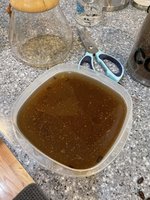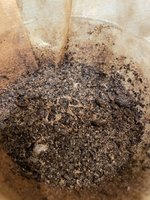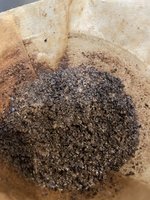Cruiser
Chumono
If you have a pour over carafe and grind your own beans, try using different grind sizes and watch how well water drains through them. It’s a fun little demonstration.
Obviously, finer grinds slow the drainage of water through the beans, but something else becomes apparent. Different bean particle sizes separate themselves with each pass of water. Smaller particles migrate to the bottom of the filter and the larger sizes to the top. With each pour, drainage slows because the smaller particles settle in the bottom of the filter.
There are probably many factors that contribute to this process, and this is a casual experiment at best, but I think there’s something going on here that we can learn from. At the very least, it shows that substrate size discrepancies do affect particle distribution and drainage over time.
Different particle sizes pre pour over.
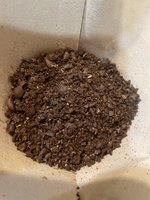
After the second pour of water

By the fifth pour. Larger and unground beans have settled in the top of the filter.

Drainage is much slower by this point.
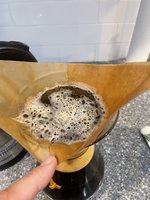
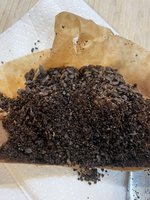
Obviously, finer grinds slow the drainage of water through the beans, but something else becomes apparent. Different bean particle sizes separate themselves with each pass of water. Smaller particles migrate to the bottom of the filter and the larger sizes to the top. With each pour, drainage slows because the smaller particles settle in the bottom of the filter.
There are probably many factors that contribute to this process, and this is a casual experiment at best, but I think there’s something going on here that we can learn from. At the very least, it shows that substrate size discrepancies do affect particle distribution and drainage over time.
Different particle sizes pre pour over.


After the second pour of water

By the fifth pour. Larger and unground beans have settled in the top of the filter.

Drainage is much slower by this point.



